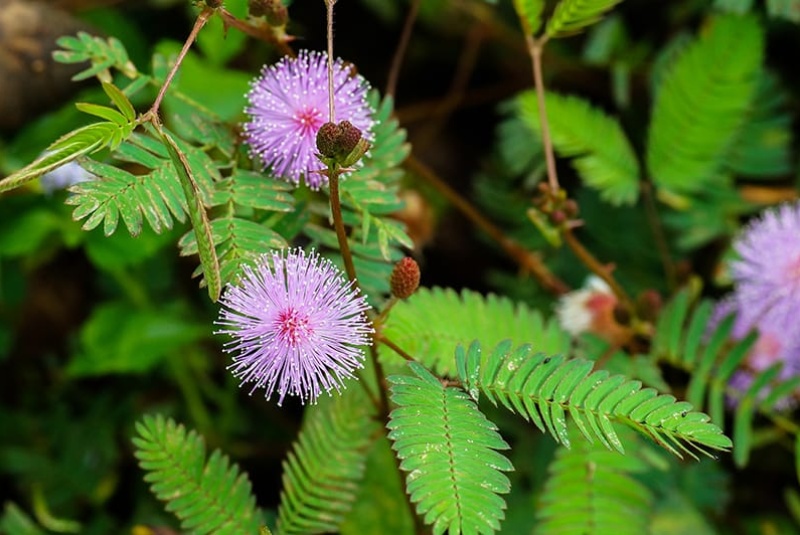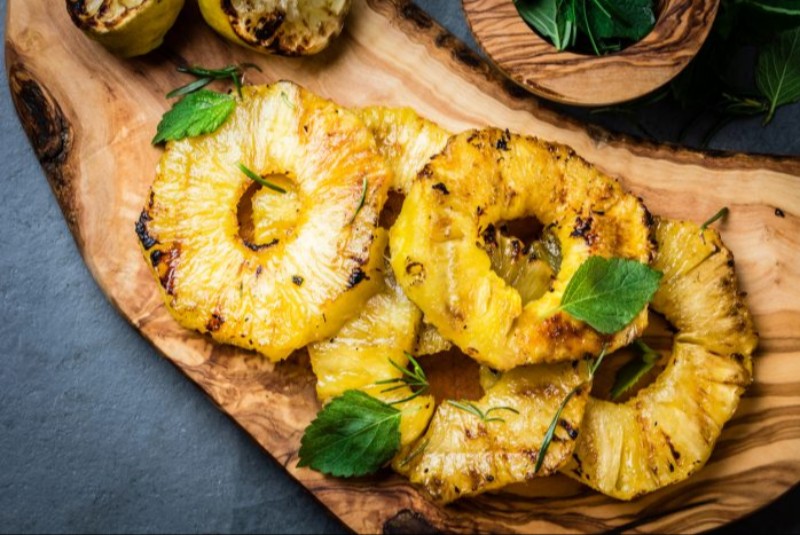In the realm of botanical wonders, the Mimosa pudica plant stands out with a peculiar trait that has captured human fascination for centuries. Native to Central and South America, this plant, colloquially known as the "Touch Me Not," exhibits a startling sensitivity to touch, which has made it a subject of study and marvel in equal measure.

Discovery and Distribution
When European explorers first encountered the Mimosa pudica in the New World, they were astounded by its responsiveness to touch. Upon human contact or even by the force of a strong wind, the leaves of this plant immediately fold inward and droop. This characteristic is not only rare but also serves as an ingenious survival strategy in the wild.
Though it originated in the tropics of the Americas, the Touch Me Not has since spread across the globe, finding its way into Asia, Africa, and other tropical and subtropical regions. Its dispersal is primarily due to human fascination, leading to its cultivation as an ornamental plant. However, in some areas, it is considered invasive, competing with native flora for space and resources.
Morphology and Physiology
The Mimosa pudica is a creeping annual or perennial herb that belongs to the Fabaceae family. It can grow to about 18 inches in height, featuring compound leaves that display four to eight pairs of leaflets. Each leaflet is capable of independent movement, which contributes to the collective action seen when the plant is disturbed.
The sensitive nature of the Mimosa pudica is due to a sophisticated network of structures and chemicals within the plant. At the base of each leaflet is a pulvinus—a swollen node—that regulates the leaf's position and movement. Within these pulvini are specialized cells that control the water pressure inside the plant, known as turgor pressure. When stimulated, these cells release ions, leading to the efflux of water and the loss of cell pressure, resulting in the leaf's collapse.
Thigmonasty: The Underlying Mechanism
The rapid folding action of the Mimosa pudica's leaves is termed thigmonasty, a non-directional response to touch or mechanical disturbance. Unlike tropisms, which are growth-oriented movements toward or away from a stimulus, thigmonastic movements are temporary and reversible. The speed and coordination of this action are remarkable, occurring within seconds of stimulation.
Thigmonasty in the Mimosa pudica involves a complex signaling cascade that translates mechanical pressure into an electrical and chemical response within the plant. Calcium ions play a significant role in this process, serving as a messenger that triggers the movement.
Ecological Significance
The ecological rationale behind the Mimosa pudica's sensitive reaction has been a topic of extensive speculation. The most widely accepted theory is that the plant's movement acts as a defense mechanism against herbivorous predators. When the leaves fold and collapse, they appear less lush and inviting to animals that might otherwise consume them. Moreover, the sudden movement may startle insects, deterring them from settling on the leaves and potentially laying eggs.
Evolutionary Adaptations
The evolutionary journey of the Mimosa pudica has led to its unique adaptations. In the competitive environment of the tropical rainforest, where sunlight and nutrients are at a premium, the Mimosa pudica has developed its sensitivity as a means to stand out in the survival race. This adaptation, while defensive, comes at the cost of reduced photosynthesis during the "sleep" state when the leaves are closed.
Human Interaction and Cultural Impact
The Touch Me Not plant's curious behavior has made it a fixture in many gardens and educational settings around the world. Children are particularly drawn to the plant's rapid response to stimuli, making it an excellent tool for teaching about plant biology and encouraging an interest in natural sciences.
Botanical Study and Scientific Research
For botanists and plant physiologists, the Mimosa pudica provides a living laboratory to study plant behavior, signal transduction, and adaptive evolution. Research into the mechanisms governing thigmonasty continues to yield insights into how plants perceive and respond to their environment.
Cultivation and Care
In cultivation, the Mimosa pudica requires careful attention. It thrives in a warm, moist environment with plenty of sunlight. Overhandling or placing it in a noisy area can lead to frequent leaf closures, which may stress the plant and reduce its vigor. Its soil needs to be well-draining, and the plant benefits from regular, but not excessive, watering.
Medical and Therapeutic Uses
Beyond its botanical interest, the Mimosa pudica has been used in traditional medicine for various ailments, from treating cuts and bruises to its use as a sedative. Its medicinal properties are attributed to an array of compounds it contains, which have anti-inflammatory and healing effects.
Challenges in Natural Habitats
In its natural habitat, the Mimosa pudica faces challenges from habitat loss and environmental changes. As tropical regions face deforestation and climate change, the delicate balance that sustains species like the Touch Me Not plant is disrupted.
Future Perspectives and Conservation
Conservation efforts for the Mimosa pudica and its habitat are crucial for preserving this species for future generations. Understanding and protecting the diversity of plant life contributes to the overall health of ecosystems and the survival of countless other species.
The Mimosa pudica, with its unique nastic movements and ecological significance, is a reminder of the intricate balance of life and the marvels of evolution. Its delicate dance away from touch is a dramatic display of the responsiveness that many plants possess, though often unnoticed. This Touch Me Not plant, which recoils at the slightest disturbance, stands as a testament to the complex and interconnected world of plants—a world full of wonders waiting to be further explored and appreciated.
Continuing with the scientific inquiry into Mimosa pudica, researchers have delved into the genetic underpinnings of its reactive movements. The sequencing of its genome offers potential clues into the evolutionary pressures that led to the development of its thigmonastic abilities. Furthermore, understanding the genetic basis of such responses can have broader implications for the study of plant neurobiology, a field that challenges traditional notions of intelligence and behavior in non-animal organisms.
The fascination with Mimosa pudica also extends into the realm of biomimicry, where scientists and engineers seek inspiration from its movements to develop responsive materials and structures. These applications could range from adaptive camouflage surfaces to smart textiles that react to environmental stimuli.
Moreover, the Touch Me Not plant has made an imprint on the arts and literature, often being used as a metaphor for shyness and sensitivity. Its portrayal in poetry and artwork underscores the deep connections humans often forge with the natural world, finding parallels between plant behaviors and human emotions.
In a time when the importance of biodiversity and the need for sustainable environmental practices are increasingly emphasized, Mimosa pudica offers a powerful symbol for conservation. It is a species that not only exemplifies the beauty and intricacy of plant life but also represents the vulnerability of ecosystems to human influence.
The Mimosa pudica is not just a biological curiosity but a species of profound significance in various fields of study and aspects of human culture. Its continued conservation is essential not just for its survival but for the larger goal of maintaining biodiversity on our planet. As we move forward, the Touch Me Not plant will undoubtedly continue to inspire curiosity and respect for the complexities of the natural world.




